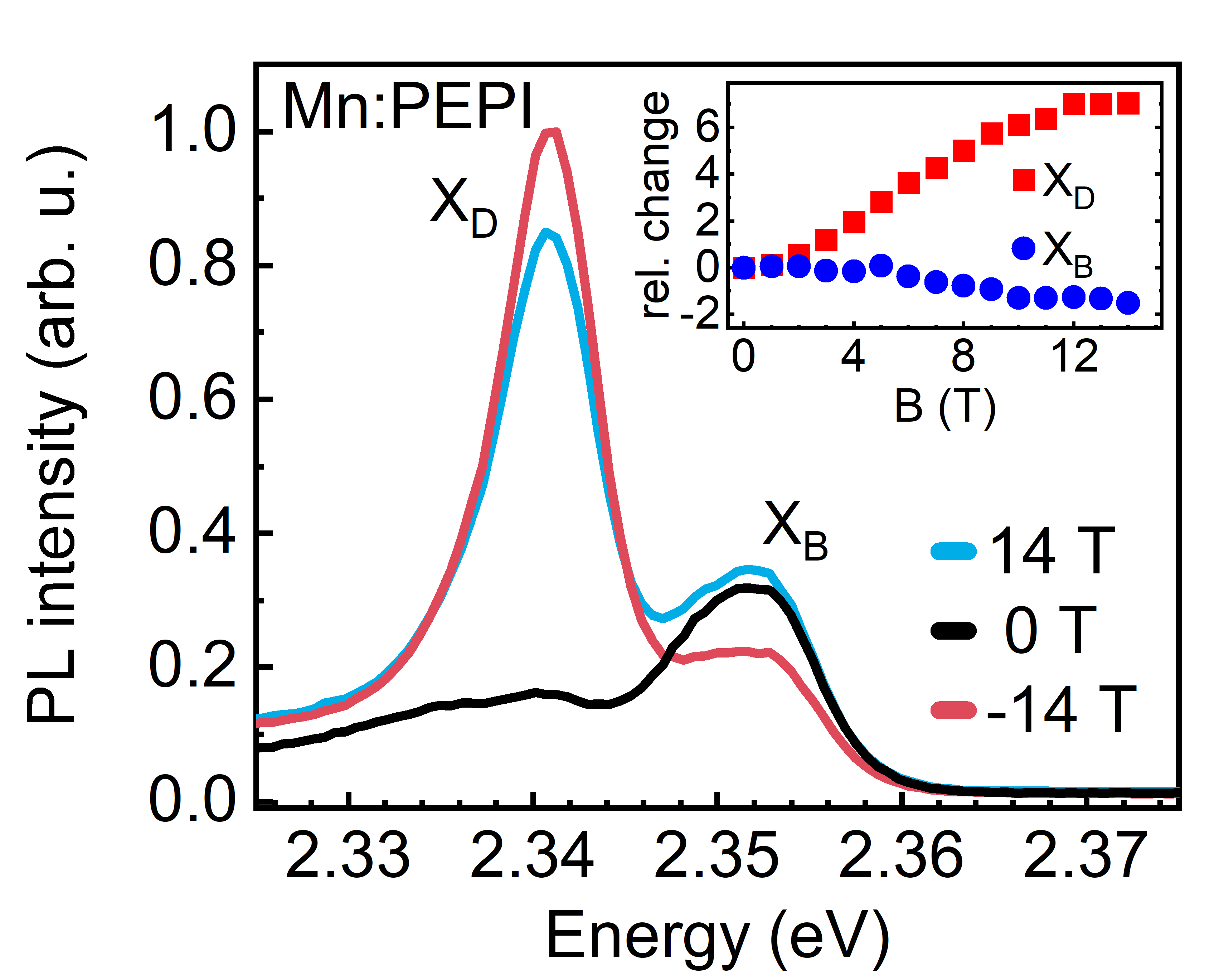Timo Neumann, Felix Deschler, TU Munich and Mateusz Dyksik, Paulina Plochocka, LNCMI Toulouse.
Hybrid metal-halide perovskites offer the opportunity for a novel control of spins in a high-performance semiconductor due to their exceptional tolerance to structural defects and impurities, combined with their production as polycrystalline thin films and nanostructures from simple scalable solution-processing techniques. Introducing a small number of magnetic dopants into the nominally non-magnetic perovskite lattice produces a dilute magnetic semiconductor, holding a great potential for creating novel opto-spintronic functionalities for information and communication technologies. The development of materials which are simultaneously magnetic and semiconducting, while retaining excellent opto-electronic properties and high luminescence yields, is a scientific challenge. Thus, the ability of perovskites to accept dopants without deteriorating the structural quality is highly appreciated. We report on the successful introduction of manganese dopants into the crystal lattice of the layered perovskite (PEA)2PbI4 inducing paramagnetism to the diamagnetic host material. This was accomplished by adding small amounts of manganese salts to the precursor solution. The measured magnetization while sweeping the magnetic field does not show hysteretic behavior and follows the Brillouin function for noninteracting J = 5/2 spin systems, corresponding to a spin alignment of the high-spin Mn d5 configuration in magnetic field. Photoluminescence (PL) measurements in magnetic field show the emergence of a new signal located at the low-energy side of the bright excitonic peak (Figure). We attribute this emission to the dark state brightened by magnetic coupling to the bright exciton in presence of a strong magnetic field. In contrast to the nonmagnetic variant, this emission shows a nonzero degree of circular polarization, reaching a value of 13 %, which we find to be directly proportional to the material’s magnetization. Our findings constitute the first demonstration of magnetization control of exciton spin physics in a transition-metal-doped lead-halide perovskite and provide a first step towards future opto-spintronic functionalities of these materials.

Figure: The circularly polarized PL spectra for Mn-doped PEPI [(PEA)2PbI4 ]. The inset shows the influence of magnetic field on the relative intensities of both dark (XD) and bright (XB) excitonic states.
Manganese doping for enhanced magnetic brightening and circular polarization control of dark excitons in paramagnetic layered hybrid metal-halide perovskites, T. Neumann, S. Feldmann, P. Moser, A. Delhomme, J. Zerhoch, T. van de Goor, S. Wang, M. Dyksik, T. Winkler, J. J. Finley, P. Plochocka, M. S. Brandt, C. Faugeras, A. V. Stier, and F. Deschler, Nat. Commun. 12, 3489 (2021).
https://www.nature.com/articles/s41467-021-23602-1
Contact: paulina.plochocka@lncmi.cnrs.fr






